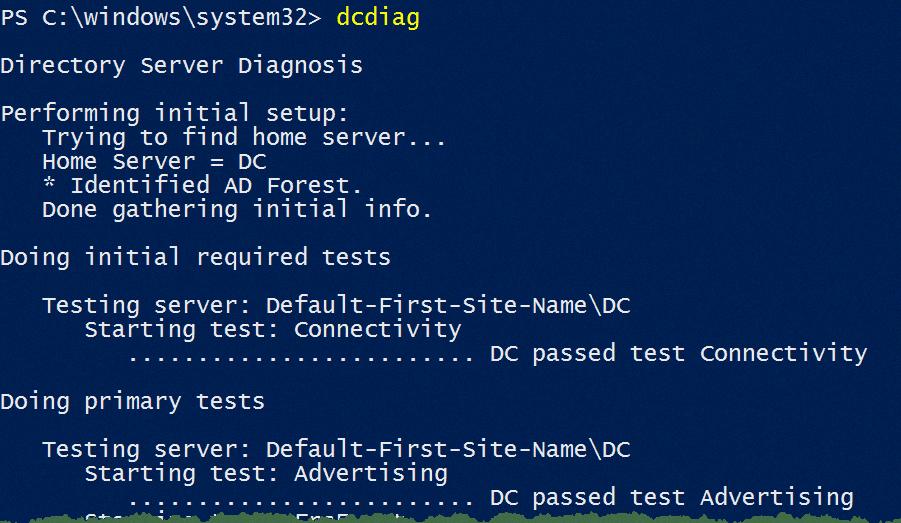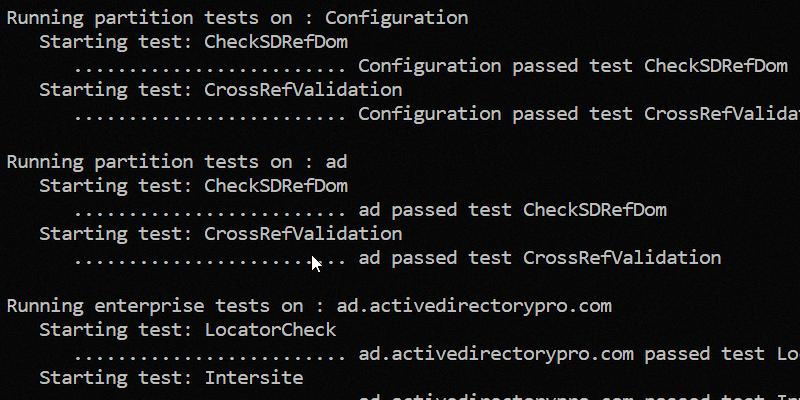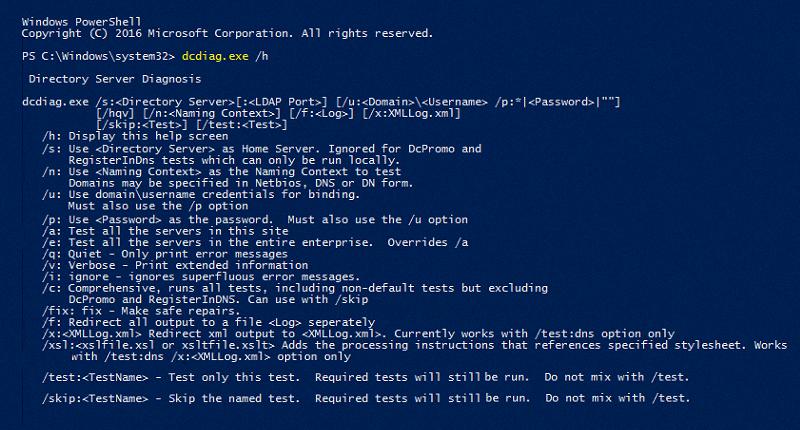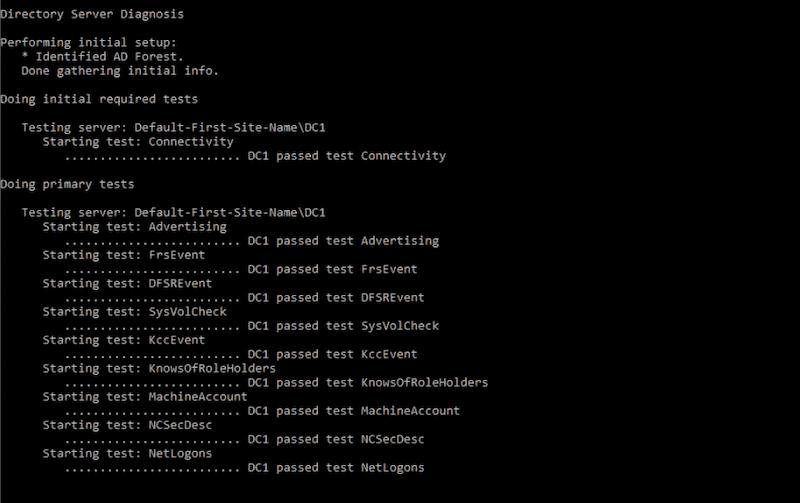DCDiag is a powerful command line tool used to diagnose and troubleshoot domain controllers. It’s included with the Windows Server operating system, and it can be used to quickly identify and resolve any issues that might be affecting the stability of your Active Directory infrastructure.
DCDiag provides a comprehensive set of tests for verifying the health of your domain controllers. It includes tests for checking connectivity, DNS, Active Directory replication, SYSVOL replication, and FSMO role holders. It also has advanced DNS tests to make sure your DNS infrastructure is working correctly.
Using DCDiag is easy – simply open a command prompt as an administrator and type ‘dcdiag /test:dns /v /s:
It’s important to periodically use DCDiag to ensure that your domain controllers are performing optimally. If you do encounter any errors or warnings while running DCDiag, further investigation may be required in order to resolve them before they can cause more serious problems down the line.
Overall, DCDiag is an invaluable tool for diagnosing and troubleshooting domain controllers – it provides a quick and easy way to check that everything is in order without having to manually go through each setting or configuration option one by one. So if you need to make sure your domain controller is running smoothly, don’t forget about using DCDiag!
Uses of DCDiag
DCDiag is a command-line tool used to diagnose and troubleshoot problems related to Active Directory Domain Controllers. It can be used to check the health of a domain controller, detect any issues with the Active Directory replication, or view the Active Directory System Services (AD SS) configuration. DCDiag checks for various conditions including network connectivity, DNS records, time synchronization, security settings, and more. It also provides detailed information on any errors or warnings it encounters, helping administrators quickly identify and resolve potential problems.

Source: 4sysops.com
Testing DNS with DCDiag
Using DCDiag to test DNS is a great way to ensure that your domain controllers are running correctly and that your DNS infrastructure is functioning properly. To use DCDiag to test DNS, open a command prompt as an administrator and type the command “dcdiag /test:dns /v /s: /DnsDynamicUpdate”. This will run several tests on the DNS service of the specified domain controller and display any errors found. You can also use the “/a” switch with this command to check all domain controllers in the domain. If any errors are reported, further investigation may be needed to resolve them.
What Does DCDiag Do?
DCDiag does not fix any issues, but it identifies potential problems that may exist on a domain controller. It provides a comprehensive set of tests that check critical domain controller functionality such as connectivity, DNS, AD replication, and SYSVOL replication. Additionally, DCDiag also checks the Flexible Single Master Operation (FSMO) role holders on the network. If any of these tests detect a problem or an error, then it will report the issue so that it can be addressed and fixed.
Running DCDiag on a Server
To run DCDiag on a remote server, you will need to open an elevated Command Prompt window. From there, you can use the command “dcdiag /s:”, where is the name of the server you would like to test? You can also specify additional parameters such as /n: to specify the domain to test if you have multiple domains, or /u:domain\username and /p: to provide credentials for binding. To test all servers in a site, use the parameter /a. Once these parameters are set up, press Enter to execute the command and start running DCDiag.
Performing a DC Health Check
In order to perform a DC health check, you need to take the following steps:
1. Ensure that all domain controllers are in sync and that replication is ongoing. You can use Active Directory Replication Status Tool (ADREPLSTATUS) to monitor the replication status.
2. Confirm that all related services are running properly. Using Windows Services Manager, you can view and manage the status of all services running on the system.
3. Use the Domain Controller Diagnostic tool (DCDiag) to check various aspects of a domain controller such as DNS, security settings, group policy objects, and more.
4. Detect any unsecured LDAP binds by using the Secure LDAP Connectivity Test Tool (LDAPTest). This helps ensure that all connections to Active Directory are secure and encrypted.
5. Review event logs for errors and other issues related to Active Directory or domain controllers.
6. Finally, run a complete health check using Microsoft’s Best Practices Analyzer (BPA). This tool will scan your environment for any potential problems or misconfigurations that could affect the performance or security of your domain controllers and Active Directory environment.

Source: activedirectorypro.com
Checking If LDAP Is Running on Domain Controller
You can use the Active Directory Administration Tool (Ldp.exe) to check if LDAP is running on your domain controller. Start the tool and then click on the Connection menu. Select Connect and type in the name of the domain controller you want to connect to. Type in port 636 and then click OK. If successful, rootDSE information should print in the right pane, indicating that LDAP is running on your domain controller.

Source: networkproguide.com
Checking the Status of Active Directory
To answer the question of how to know if Active Directory is running properly, the best way is to use the console utility Dcdiag. Dcdiag performs several tests designed to verify that your domain controller is operating correctly. If any of these tests fail, it can provide guidance on how to troubleshoot and resolve any issues. In addition, you should also monitor the Event Viewer logs for any errors or warnings related to Active Directory. These events can provide clues as to what might be causing issues with your domain controller. Finally, you should also make sure your domain controllers have up-to-date security patches installed and confirm that all services related to Active Directory are running properly.
Identifying a Tombstoned Domain Controller
The best way to determine whether or not your domain controller is tombstoned is to check the replication status of your domain controllers. To do this, you can use the Active Directory Sites and Services snap-in, which is available in the Administrative Tools folder on the Start menu. Once you have opened AD Sites and Services, expand the Sites folder, right-click on a domain controller, and select Replicate Now. If replication fails with an error message such as “The Active Directory cannot replicate with this server because the time since the last replication with this server has exceeded the tombstone lifetime”, then you know that your domain controller has been tombstoned.
Additionally, you can also check for tombstoning by running a repadmin command from an elevated command prompt:
repadmin /showobjmeta *
This will show you a list of all objects that have not been replicated to or from your domain controller within its tombstone lifetime – if there are any objects listed here then it indicates that your domain controller has been tombstoned.

Source: pcwdld.com
Diagnosing a Domain Controller
Running diagnostics on a domain controller can help you identify any problems that could be affecting your network. To run diagnostics, you’ll need to open a Command Prompt window with Administrator privileges. Once this is done, type in the command “dcdiag”. This will run a diagnostic check on the local domain controller to identify any issues. Additionally, you can use the command “netdiag” to check your network connection and troubleshoot any issues that arise. After running these commands, review their results to determine if there are any problems that need to be addressed.
Checking for Replication Between Domain Controllers
Checking for replication between domain controllers is a straightforward process. First, you must open an elevated command prompt. To do this, press the Windows key and type ‘cmd’ in the search bar. Right-click the Command Prompt application and select ‘Run as administrator’ from the drop-down menu.
Once you have opened an elevated command prompt window, you can use the ‘repadmin /showrepl’ command to view the replication status between all your domain controllers. This will give you detailed information about which domain controllers are replicating with one another and whether any issues have been encountered during replication.
If you would like an overall replication health summary, you can use the ‘repadmin /replsummary’ command to get a quick overview of how your domain controllers are currently replicating with each other. This will provide information about any replication errors or delays that may be occurring across your domain controllers.
By regularly checking for replication between your domain controllers using these commands, you can ensure that your network is healthy and that all necessary changes are synchronized between all domain controllers in a timely manner.
Conclusion
In conclusion, dcdiag is a powerful command-line tool that provides detailed information and analysis about Active Directory domain controllers and the associated services. It is capable of testing critical domain controller functionality such as connectivity, DNS, AD replication, SYSVOL replication, and Flexible Single Master Operation Role holders. This makes it an invaluable tool for ensuring that the network is running properly and securely. Additionally, it can test all servers in a site with the /an option and can also be run against remote servers with the /s:








